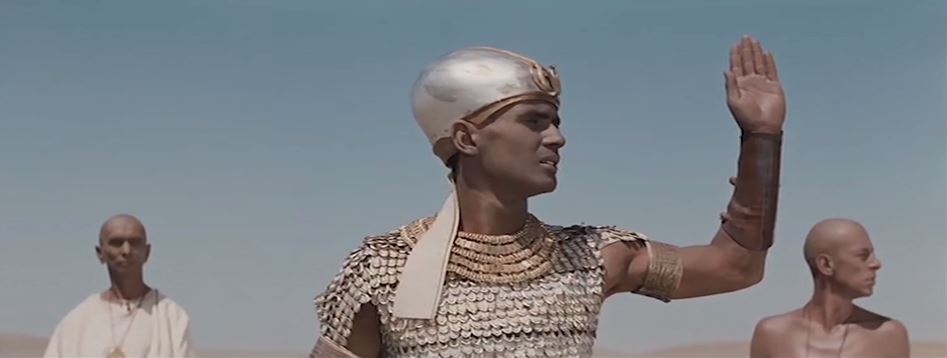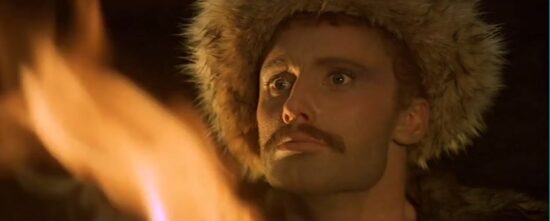For this analysis, we will focus on the battle scene from the movie Faraon (Pharaoh), which is directed by Jerzy Kawalerowicz. The scene was filmed during sunrise in the Kyzylkum Desert. At this particular time of day, the light provides a chiaroscuro effect, making all the features of the desert landscape, such as pits and ridges, clearly visible.
Ramesses leads the Egyptian army. His head is protected by a combat helmet. The sky is reflected in the helmet’s polished surface. This is how the viewer’s attention is directed towards the future pharaoh’s divinity, which the Egyptians believed. The perspective from which space is shown, in the scene, is based on ancient Egyptian iconography. It utilises register, which means that the troops that are located further away, are shown as being stacked higher forming horizontal layers, or bands. Since the sunrise and the characteristic light lasted only for several minutes, the scenes had to be filmed rather quickly.
The filmmakers and background actors finished their preparations and then spent the preceding night the filming day in the desert.
The section of the desert that was chosen for the production site, had to possess a certain aesthetic. Furthermore, the place where the scenes of attack were filmed had to match the requirements set by Witold Sobociński, the second operator. In order to achieve a desirable rhythm for the sequence, the filmmakers chose dunes, which soldiers could climb relatively quickly. The descent needed to be quick as well. A special litter was constructed in order to make it possible to present the scene, of the attack, from a subjective perspective, so from the point of view of one of the soldiers. The litter needed to be carried by 20 men. This technique allowed the director to take the viewer on the march with the attacking troops. The litter made it possible for an operator to stand on it and film the scene amongst the attacking soldiers. Witold Sobociński’s cinematography composes the attack scene using a rhythm with a camera that faces forward and backward. There are moving shadows on the sand and visual micro-rhythms of torsos and legs are shown in close-ups. The sounds include footsteps and breathing.
An image filmed in this manner defines the effort and the growing fatigue of the running soldiers. It intensifies the viewer’s impression by being a part of the attacking troops.
When the army meets the enemy, the distance between the soldiers and the opponents suddenly becomes very short. The direct confrontation is shown from the perspective of an individual. The scene of the attack is in fact an attempt to influence the viewer’s emotions by presenting them with the experience of participating and dying in a battle in a very direct way. It is worth noting that a soldier’s death is reflected by both a visual and an auditory layer.
Seweryn Kuśmierczyk




